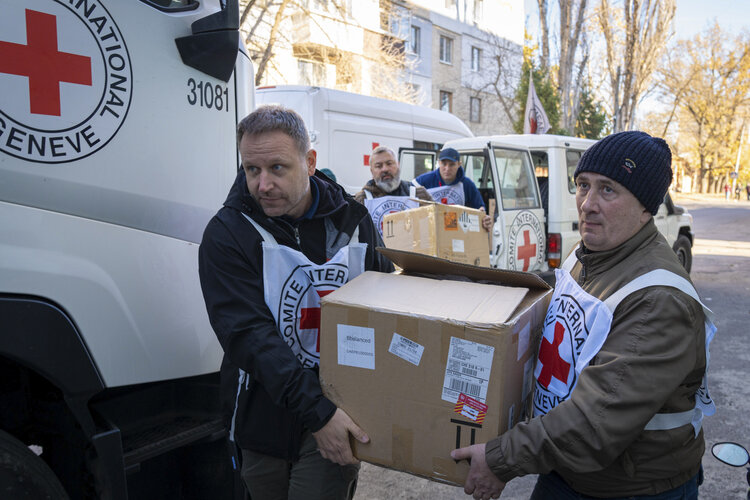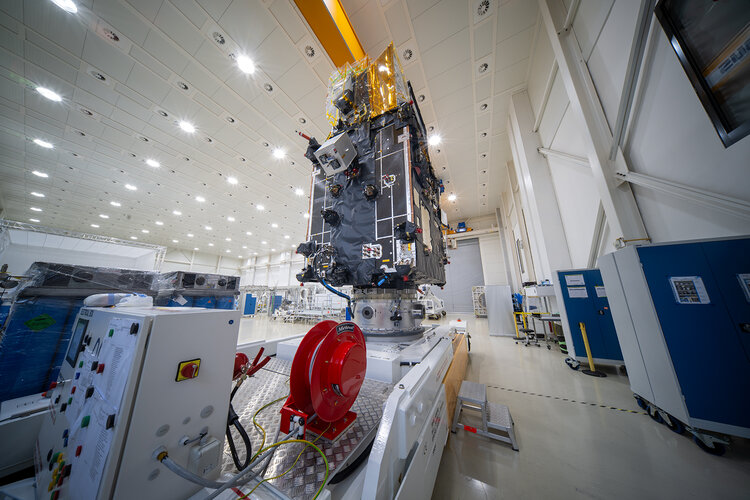
Copernical Team
Musk in X spat with Danish astronaut over 'abandoned' ISS crew
 The world's richest man Elon Musk got into a heated row Thursday with a Danish astronaut who criticized the tech billionaire's claim that former president Joe Biden intentionally abandoned two American astronauts aboard the International Space Station.
Andreas "Andy" Mogensen had shared on X a Fox News clip featuring Musk and his boss, US President Donald Trump, where Musk claimed NASA's But
The world's richest man Elon Musk got into a heated row Thursday with a Danish astronaut who criticized the tech billionaire's claim that former president Joe Biden intentionally abandoned two American astronauts aboard the International Space Station.
Andreas "Andy" Mogensen had shared on X a Fox News clip featuring Musk and his boss, US President Donald Trump, where Musk claimed NASA's But Moon or Mars? NASA's future at a crossroads under Trump
 Is NASA still Moonbound, or will the next giant leap mean skipping straight to Mars?
Speculation is mounting that the Trump administration may scale back or cancel NASA's Artemis missions following the departure of a key official and Boeing's decision to lay off hundreds of employees working on its lunar rocket.
Late Wednesday, NASA abruptly announced the retirement of longtime associate
Is NASA still Moonbound, or will the next giant leap mean skipping straight to Mars?
Speculation is mounting that the Trump administration may scale back or cancel NASA's Artemis missions following the departure of a key official and Boeing's decision to lay off hundreds of employees working on its lunar rocket.
Late Wednesday, NASA abruptly announced the retirement of longtime associate Earth from Space: Tokyo, Japan
 Image:
This Copernicus Sentinel-1 radar image shows Tokyo and its metropolitan area, the largest urban agglomeration in the world.
Image:
This Copernicus Sentinel-1 radar image shows Tokyo and its metropolitan area, the largest urban agglomeration in the world. ESA and Red Cross partnership brings space technology to disaster management

The European Space Agency (ESA) and the International Committee of the Red Cross (ICRC) have signed a Memorandum of Intent (MoI) to harness space technology for humanitarian assistance worldwide. The partnership will combine ESA's space expertise with ICRC's humanitarian reach to develop space-enabled solutions that can help protect and assist communities affected by disasters and conflicts across Europe and beyond.
Week in images: 17-21 February 2025

Week in images: 17-21 February 2025
Discover our week through the lens
Two atmospheric missions on one satellite

The second of the Meteosat Third Generation (MTG) satellites and the first instrument for the Copernicus Sentinel-4 mission are fully integrated and, having completed their functional and environmental tests, they are now ready to embark on their journey to the US for launch this summer.
Developing an open-source tool for a European space-grade computer chip

Space missions require high-performance, reliable and adaptable computing solutions that can operate in extreme conditions. An innovative project by YosysHQ and funded through ESA's Discovery element seeks to develop an open-source toolchain to work with a space-grade, radiation-hardened Field-Programmable Gate Array (FPGA) architecture.
Glacial Ice Loss Escalates Freshwater Depletion and Sea Level Rise
 A recent study underscores the accelerating loss of glacial ice worldwide, depleting regional freshwater reserves and significantly contributing to rising global sea levels. Conducted as part of the Glacier Mass Balance Intercomparison Exercise (GlaMBIE), the research, published in *Nature* on February 19, 2025, involves contributions from 35 international teams, including the German Aerospace C
A recent study underscores the accelerating loss of glacial ice worldwide, depleting regional freshwater reserves and significantly contributing to rising global sea levels. Conducted as part of the Glacier Mass Balance Intercomparison Exercise (GlaMBIE), the research, published in *Nature* on February 19, 2025, involves contributions from 35 international teams, including the German Aerospace C Long-Term Decline in Downward Surface Solar Radiation Highlights Emission Impacts
 A new study led by Dr. Fengfei Song and Dr. Lixin Wu from the Frontier Science Center for Deep Ocean Multispheres and Earth System and the Physical Oceanography Laboratory at Ocean University of China has examined long-term trends in downward surface solar radiation (DSSR).
As a crucial component of Earth's energy balance, DSSR influences global climate patterns and is essential for renewa
A new study led by Dr. Fengfei Song and Dr. Lixin Wu from the Frontier Science Center for Deep Ocean Multispheres and Earth System and the Physical Oceanography Laboratory at Ocean University of China has examined long-term trends in downward surface solar radiation (DSSR).
As a crucial component of Earth's energy balance, DSSR influences global climate patterns and is essential for renewa Solar Orbiter prepares for unprecedented Venus flyby
 ESA's Solar Orbiter, a collaborative mission with NASA, is poised for its closest-ever approach to Venus, marking a pivotal moment in its mission to study the Sun's polar regions.
The spacecraft's maneuver will alter its orbital trajectory, granting scientists a rare opportunity to observe the Sun's poles, a perspective unattainable from Earth. Insights gained from this unique vantage poin
ESA's Solar Orbiter, a collaborative mission with NASA, is poised for its closest-ever approach to Venus, marking a pivotal moment in its mission to study the Sun's polar regions.
The spacecraft's maneuver will alter its orbital trajectory, granting scientists a rare opportunity to observe the Sun's poles, a perspective unattainable from Earth. Insights gained from this unique vantage poin 
